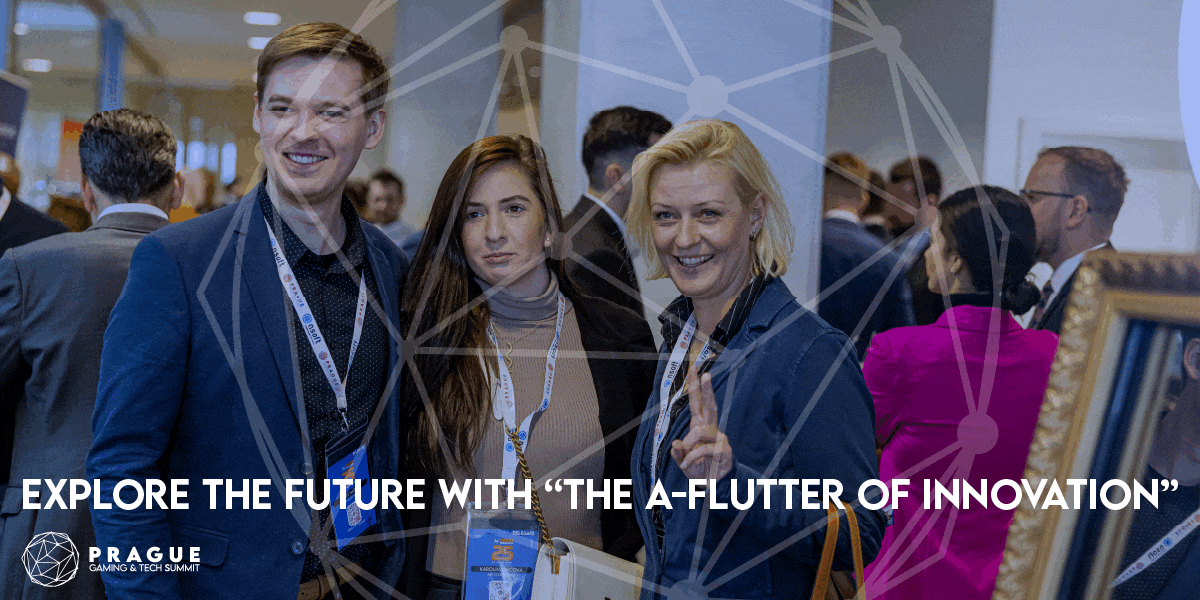Fintech PR
Chinese fintech attracted investments of USD 962.2 million in 2H 2019

Fintech companies in China attracted USD 962.2 million in investments from venture capital, private equity and M&A in 2H 2019, resulting in a total of USD 4,479 million in investments for the whole of 2019, according to KPMG’s Pulse of Fintech H2’19 bi-annual report on global fintech investment trends.
Fintech investment in China took a breather after a massive 2018, but the country’s fintech market continued to see substantial activity and Chinese companies still ranked among the largest fintech deals in Asia Pacific for the whole of 2019. China’s large technology giants continued to focus on growing their reach geographically, making investments or plays well outside of Greater China. Ant Financial, for example, submitted an application for a digital banking license in Singapore in late 2019, while Tencent made a number of significant investments in fintech companies in other regions throughout the year, including Ualá in Argentina.
Investors in China also began to turn their attention to up-and-coming areas of fintech. These include regtech, which has appeal among VC investors because of its ability to leverage artificial intelligence and machine learning to assess risk and identify fraud. China-based investors are also interested in fintech companies that use these technologies more broadly to improve the operations of banks and financial institutions, such as improving operational efficiencies, generate and analyse data, as well as support wealth management.
The third quarter of 2019 saw the People’s Bank of China unveiled a three-year plan to support the development of the fintech industry. Since then, there has already been a number of moves focused on implementation. For example, a fintech sandbox is in development, with testing currently being concluded in Beijing. It is expected that this plan will help fuel future investment in fintech, particularly in key areas like risk management, cybersecurity, big data, artificial intelligence, distributed databases and authentication.
Chris Wang, Partner, Head of Fintech, KPMG China, commented, “China’s central bank and other authority bodies are working to move fintech in the country to ‘2nd half’ as part of their three-year fintech development plan. We anticipate an increased regulation and guidance for the industry and an enhanced infrastructure to support fintech development. For example, sandbox mechanism is being designed and may soon roll out to test the concept of different fintech to make sure they comply with regulations and will achieve the desired results before they enter the market.”
The fintech market in Hong Kong saw some resilience in the fourth quarter of 2019, particularly on the back of Alibaba’s decision to do a secondary listing on the Hong Kong Stock Exchange, which raised USD 11.2 billion, making it the largest listing of the year globally.
Earlier in 2019, Hong Kong issued the first batch of eight digital banking licenses. ZhongAn was the first to launch a digital bank pilot, with others expected to follow suit in 2020. As the licensees continue to formulate their digital bank offerings, Hong Kong could see an upswing in investments in related areas, like KYC, regtech, digital onboarding and communications, and digital banking infrastructure. The issuance of digital banking licences has also spurred traditional banks to improve their own digital offerings and experience.
Avril Rae, Director, Head of Fintech, Hong Kong, KPMG China, said, “We’re starting to see ecosystems evolving with respect to digital banks. Partners are coming together to get digital banking licenses. Once they have their pilot projects underway, and they have proven their technology both internally and to the Hong Kong Monetary Authority, we’ll start to see them leveraging those partnerships more deeply – integrating banking services with other offerings like travel bookings or insurance to provide their customers with a seamless experience.”
SOURCE KPMG China
Fintech PR
Why Are There No New Users in the Crypto Market? How Multi-Asset Trading Wallet BiyaPay Is Finding New Solutions Amidst Fierce Competition and User Confusion ?

SINGAPORE, March 31, 2025 /PRNewswire/ —
Introduction
In recent years, the cryptocurrency market has undergone a dramatic shift from euphoria to calm. At one point, Bitcoin and Ethereum prices hit new highs, and concepts like NFTs and the Metaverse rapidly gained traction, attracting a flood of new users. However, as the market cooled down, the growth of new users slowed significantly, even showing signs of stagnation. This phenomenon has caused concern within the industry: why is the crypto market struggling to attract new participants? Despite continuous technological innovation and an abundance of new projects, public interest has not kept pace. The challenges faced by the crypto market are rooted in increasing competition and a more complex ecosystem, which has left new users confused. This article will explore why the crypto market is experiencing a lack of significant new user growth and discuss how, in the midst of intense competition and user confusion, companies like BiyaPay, a leading multi-asset trading wallet, are finding new ways to drive growth in the crypto industry.
Market Situation Analysis
The competition in the crypto market has intensified, and the ecosystem has become increasingly saturated. From public chains to sidechains, to Layer 2 networks and various decentralized applications (dApps), the number of projects has exploded. According to statistics, over 350 active blockchain networks exist worldwide, and the number of new tokens issued each day reaches tens of thousands. The fragmentation of the market has intensified, and users are now faced with an overwhelming number of choices. However, despite the continuous increase in projects, user growth has not followed suit. Indicators like Total Value Locked (TVL) show that the current cycle has not surpassed previous market highs. The decline in search interest for the term “crypto” on Google Trends also reflects the cyclical decrease in public interest. For beginners, entering the crypto world is far from simple: hundreds of blockchains, wallets, and various protocols and applications make the decision process overwhelming, and the sheer number of options raises the cognitive and usability barriers.
The stagnation in new user growth is driven by multiple factors. First, the user experience of crypto products is significantly more complex than that of traditional internet applications. New users must not only install digital wallets, back up recovery phrases, purchase digital currencies, and pay miner fees but also switch between different blockchain networks, which is particularly daunting for those with no prior exposure to crypto technology. Second, market fragmentation is severe. The ecosystems of various public chains are isolated, making asset interoperability a challenge. This means users need to switch between platforms, for example, dApps on Ethereum have high transaction fees, and users seeking cheaper alternatives often have to learn new wallets and operational logic. The lack of unified standards and interoperability creates friction in user experiences. Lastly, information overload exacerbates user confusion. With thousands of token projects, new users often struggle to distinguish valuable projects from fraudulent ones. The complexity of the experience and the overload of information discourage potential users from entering the market.
Beyond the complexity of the user experience, external factors also contribute to the hesitation of new users entering the crypto market. One significant challenge is regulatory uncertainty. Different countries have vastly differing attitudes toward cryptocurrencies, and their regulations are subject to frequent changes. Some countries have welcomed crypto innovation only to suddenly impose strict regulations, while others have yet to define clear regulations. This uncertainty makes it difficult for crypto companies to operate compliantly, and users feel uneasy about investing in crypto due to the risk of sudden regulatory crackdowns. Another challenge is the frequent occurrence of security incidents, which has damaged the public image of the industry. Events such as exchange bankruptcies, project founders running off with funds, and hacking incidents have shaken user confidence in the safety of crypto platforms. The media’s coverage of crypto scams, money laundering, and other criminal activities has further exacerbated the industry’s reputation crisis. These events make ordinary users wary of entering the crypto space, as they fear losing their funds or getting caught up in illegal activities. Trust issues have become the most significant psychological barrier preventing new users from entering the market.
Core Barriers to User Growth
The target audience for the crypto industry is not homogeneous but highly diversified. Developers, ordinary users, investors, and institutions all have different needs, contributing to the fragmentation of the market. For example, public chain projects primarily target developers, as only developers can build applications that attract end users and grow the ecosystem. Therefore, public chains need to focus on “developer marketing” and technical documentation to encourage developers to adopt their chains. However, these efforts may not directly translate into growth for the average user base. For dApp applications, which should ideally focus on end users, many instead focus on attracting token holders and speculative funds. Sometimes token holders are not actual users of the product but engage in speculative arbitrage, which does not contribute to real user growth. Venture capitalists and institutional investors are primarily focused on return on investment (ROI), and they invest in projects with the expectation that token prices will appreciate. This often leads projects to prioritize token price management and exchange partnerships over improving the product’s appeal to everyday users. Meanwhile, retail speculators are more concerned with short-term price fluctuations and lack patience for long-term value, which makes it difficult to cultivate a loyal user base. Technical partners, such as cross-chain bridges and wallet plugins, form another isolated group. The diverse interests of these stakeholders contribute to the fragmentation of the market, making it harder to target and grow a unified user base.
The high technical complexity of crypto technology is another significant barrier to user adoption. Many ordinary people have heard of Bitcoin but find it difficult to understand blockchain principles, private key signing, or how to manage a string of characters on their own. The high technical threshold leads to mistakes or discomfort when users first experience the technology. For example, a user might accidentally enter the wrong address during a transaction, resulting in the loss of their assets. The high transaction fees, especially during Ethereum’s peak, also discourage small investors and beginners from participating in the market. These issues highlight that blockchain infrastructure is still far from being ready for large-scale commercial adoption. At the same time, the lack of trust has worsened the problem. The 2021 bull market attracted a wave of mainstream users, especially with celebrities endorsing NFTs, but many new users withdrew after the market crash in 2022. Exchange collapses and project failures have left people with negative perceptions of the industry. When the media frequently reports on Bitcoin’s “death” or the collapse of major crypto projects, it reinforces this negative view. Therefore, when technical complexity and trust issues are combined, convincing new users to enter the market becomes an uphill battle. They are either discouraged by the high barriers to entry or deterred by security concerns.
The high cost and complex entry process are additional hurdles for new users. For many newcomers, buying cryptocurrencies is already a significant barrier. Fiat-to-crypto channels are limited, and transaction fees can be high. Through third-party payment methods, users might face additional fees of 2-5%, discouraging small-scale users. Additionally, the volatility of crypto asset prices often causes new users to fear that they will “get stuck” as soon as they enter the market, adding to the psychological cost. Transaction costs are also significant, including high fees for blockchain Gas and additional charges for withdrawal and exchange transactions. Furthermore, the onboarding process is complex. Traditional financial account opening may only require identification documents, but in the crypto world, new users often face multiple steps: registering on exchanges, completing KYC (Know Your Customer) verification, linking bank accounts or wallets, depositing fiat currency to purchase USDT or BTC, and finally transferring funds to personal wallets. This process involves several platforms, and each step introduces new concepts (KYC, wallet addresses, private keys) that users need to understand. Some users may abandon the process midway or fall victim to phishing sites that steal recovery phrases. In comparison, Web2 applications have far simpler onboarding processes. The cumbersome entry process further reduces the attractiveness of crypto products to new users.
Where Is the Breakthrough?
To overcome these barriers, the crypto industry must focus on lowering entry barriers, building trust, and enhancing practical functionality. One company leading the way in this regard is BiyaPay, a global multi-asset trading wallet that offers potential solutions through its product features and service model.
BiyaPay’s standout feature is its multi-asset trading function, which allows users to manage various financial assets, including digital currencies, U.S. stocks, Hong Kong stocks, and more, all within a single platform. This “one-stop” design significantly reduces the entry barrier for new users. Firstly, new users no longer need to download multiple apps or switch between platforms. Traditionally, users needed to open a securities account to trade stocks and register with a crypto exchange for digital currencies. With BiyaPay, users can trade both stocks and crypto assets in one wallet, greatly simplifying the process. For traditional investors, they can now access digital currencies through a familiar stock trading platform, while crypto users can easily engage in traditional asset trading. Secondly, this multi-asset integration makes cross-market operations much more convenient. Users can exchange stablecoins for U.S. dollars and trade U.S. or Hong Kong stocks without the need for complex cross-border transfers or opening offshore accounts. BiyaPay supports converting USDT or other digital assets into fiat currencies and then using them to buy and sell U.S. or Hong Kong stocks, all without the hassle of opening offshore bank accounts. The platform allows for rapid account opening in just five minutes and seamless asset exchange, making global financial markets easily accessible. This simplified experience greatly reduces the psychological barriers for new users, making them more likely to engage with different features.
Another breakthrough offered by BiyaPay is its global payment and remittance services, which solve the difficulties associated with cross-border transactions. The platform supports real-time exchange and remittance for over twenty fiat currencies and more than ten major cryptocurrencies at very low costs. For example, a user working overseas can easily send funds to their family by exchanging digital assets into the local fiat currency on BiyaPay and transferring the funds to a recipient’s account. The low fees (around 0.5%) and the elimination of complex intermediary steps provide a significant advantage over traditional remittance services, which can take days to process and have high fees. This service meets real-world financial needs, attracting users who may not be interested in crypto technology itself but need a convenient cross-border payment solution. For instance, in countries experiencing high inflation, residents can use BiyaPay to convert their local currency into stablecoins for value preservation and then exchange them back into fiat currency when needed. This new use case for crypto is a major breakthrough for the industry, as it shifts the focus from speculative trading to practical financial solutions, making the crypto world more accessible.
BiyaPay also builds user trust by operating in a fully compliant and secure manner. It is headquartered in Singapore, with subsidiaries in the U.S., Canada, and Hong Kong, holding comprehensive financial licenses to ensure legal and compliant operations. BiyaPay emphasizes its “complete licensing, safe and reliable” credentials, which help build trust, especially during times of regulatory uncertainty. Users are more likely to trust a regulated platform with legitimate licenses rather than an anonymous underground exchange. In addition to regulatory compliance, BiyaPay also focuses on security, using bank-grade encryption and multi-factor authentication mechanisms to safeguard user assets and data. This focus on security and risk management ensures that users can make secure transactions without worrying about their funds being frozen or confiscated, a common concern among crypto users.
BiyaPay’s multi-asset strategy not only lowers entry barriers but also broadens its potential user base. By offering both traditional financial assets and cryptocurrencies on the same platform, BiyaPay appeals to a diverse range of investors. Traditional investors who are interested in global markets can use BiyaPay to access cryptocurrency markets easily, while crypto investors can use the platform to diversify their portfolios into traditional assets. This cross-pollination between the “stock” and “crypto” communities significantly expands BiyaPay’s user base.
Future Trends and Outlook
Looking ahead, the emergence of Web3 technologies offers new growth opportunities for the crypto market. Social finance, NFTs, and the Metaverse are emerging fields that could drive the next wave of user growth. BiyaPay can tap into these trends by supporting features such as NFT asset management and Metaverse payment solutions, which would cater to users’ needs in these new areas.
In addition to technological innovation, the crypto industry needs to invest in branding and user education to truly reach new audiences. Clear marketing messages and user education efforts can break down existing barriers to entry. By promoting simple, relatable messages such as “blockchain makes cross-border payments as easy as texting,” crypto platforms like BiyaPay can resonate with mainstream users and reduce the cognitive hurdles new users face.
Conclusion
The slowdown in new user growth in the crypto market is due to a combination of factors, including technological complexity, market fragmentation, and trust issues. However, by improving the user experience, strengthening compliance and security, and expanding practical use cases, the market can overcome these barriers. BiyaPay, as a leading multi-asset trading wallet, demonstrates a successful approach by offering integrated services, global payment solutions, and strong regulatory compliance. The future of the crypto industry looks promising, with the potential to attract new users through innovative products and improved user experiences.
About BiyaPay
BiyaPay is a global multi-asset trading wallet that supports instant exchange of more than 30 fiat currencies and more than 200 digital currencies, and provides USDT direct advertising US stocks, Hong Kong stocks and digital currency spot and contract trading services. Its compliance withdrawal channel and one-stop financial ecosystem are trusted by users around the world.
Learn more information
BiyaPay official website: www.biyapay.com
Customer service email: service@biyapay.com
Telegram supports: https://t.me/biyapay001
Logo – https://mma.prnewswire.com/media/2568572/image_5031329_39789762_Logo.jpg

Fintech
Fintech Pulse: Your Daily Industry Brief – March 29, 2025 Featuring: Charlie Javice, Rabobank, Mollie, Ivy, Barclays, and more

In the rapidly evolving world of financial technology, staying ahead of the latest trends, regulatory shifts, and market disruptions is critical for industry insiders and observers alike. Today, we delve deep into the most pressing news shaping fintech and banking—from high-stakes legal verdicts and strategic acquisitions to growth strategies and innovative payment solutions. This op-ed-style briefing offers detailed analysis, expert commentary, and an engaging narrative that not only recounts the day’s developments but also reflects on the broader implications for the industry.
In our exploration today, we break down five major stories that have captured headlines, examining each piece from multiple angles to understand its impact on fintech innovation and market dynamics. We explore the legal ramifications of a controversial verdict involving one of fintech’s notable entrepreneurs, the strategic moves by a Kazakh fintech giant in acquiring operations in Turkey, and provide insights on building trust and scaling within fintech from industry-leading voices. Additionally, we weigh the perspectives of former banking executives on the changing landscape and review how partnerships in payments are reshaping European banking.
Below, we present our detailed daily briefing, with each section meticulously referencing the original sources as “Source: [Name of source or publication]” to maintain journalistic integrity and clarity. Read on to uncover our comprehensive analysis, expert insights, and opinions that are essential for anyone keen to understand the intricacies of the fintech pulse.
I. The Charlie Javice Verdict: A Wake-Up Call for Fintechs and Banking
A. Overview of the Verdict and Its Implications
A landmark verdict, centered on the actions and business practices of Charlie Javice, has sent shockwaves across the fintech and banking sectors. The case, widely discussed in a detailed Forbes analysis, marks a pivotal moment for industry regulation and ethical standards. As we break down the case, it is important to consider both the immediate legal implications and the long-term message it sends to fintech startups and established financial institutions.
The verdict not only scrutinizes individual accountability but also questions the broader frameworks governing fintech innovation. Industry experts warn that the case could lead to tighter regulatory oversight, impacting venture capital flows, operational transparency, and risk management. The narrative around this verdict is not simply one of legal adjudication; it also serves as a clarion call for enhanced due diligence and compliance across the board.
B. Analysis and Commentary
The significance of the verdict lies in its potential to redefine corporate governance within the fintech ecosystem. In an industry that prides itself on rapid innovation and disruption, the outcome of such high-profile cases forces companies to balance growth ambitions with robust risk management practices. The verdict underscores the importance of ethical conduct, urging fintech firms to reassess their internal policies and governance structures. The legal proceedings, as reported in Forbes, have ignited a debate on the appropriate balance between innovation and regulation.
Source:
C. Broader Industry Reactions
The broader fintech community has been abuzz with discussions on forums, industry conferences, and social media. Many believe that while the verdict might slow down some innovative processes, it is ultimately a necessary measure to instill greater accountability. Banking institutions, traditionally burdened by strict regulatory oversight, now find themselves in a unique position to lead by example, leveraging their established compliance frameworks to navigate these turbulent times.
Regulators, for their part, are watching closely to gauge whether the verdict will set a precedent for future cases. The conversation extends beyond legal circles; investors, too, are reassessing risk profiles in light of these developments. The jury is still out on the long-term impact, but one thing is clear: the fintech sector must evolve to meet a new era of accountability and ethical business conduct.
D. Reflections on Innovation Versus Regulation
This case opens a larger discussion about how fintech companies can innovate responsibly while meeting increasingly rigorous regulatory standards. A balance must be struck between pursuing groundbreaking ideas and ensuring that such innovations do not come at the expense of ethical practices. Industry veterans suggest that this might be the beginning of a more mature phase in fintech—one where compliance and innovation are not seen as mutually exclusive but as complementary forces that drive sustainable growth.
As companies adapt to these new expectations, partnerships between fintech firms and traditional banks may become even more critical. The blending of agile fintech innovation with the robust compliance mechanisms of established banks could pave the way for a more resilient and secure financial ecosystem.
II. Strategic Acquisitions: Kazakh Fintech Giant’s Bold Move in Turkey
A. The Acquisition Explained
In a move that has captured significant attention in global business circles, a leading Kazakh fintech company has acquired the Turkish operations of Rabobank. This strategic acquisition, reported by Daily Sabah, is not only a testament to the growing influence of Central Asian fintech players but also a signal of the increasing cross-border collaborations shaping the fintech landscape.
The acquisition involves the takeover of Rabobank’s Turkish operations, a deal that is expected to expand the Kazakh company’s footprint and significantly boost its market presence. With Turkey being a vibrant market with a burgeoning fintech scene, this deal is seen as a critical step towards consolidating market share and driving innovation in financial services across the region.
Source:
B. Rationale Behind the Acquisition
The rationale behind this acquisition is multifaceted. Firstly, it allows the Kazakh fintech firm to diversify its portfolio by tapping into a market with high growth potential. Secondly, by absorbing the Turkish operations of a well-established institution like Rabobank, the firm gains access to a wealth of experience, operational know-how, and an expanded customer base.
From an operational standpoint, the acquisition is likely to streamline processes, enhance technological capabilities, and create synergies that benefit both entities. The deal is indicative of a broader trend in fintech where consolidation is becoming a favored strategy for overcoming market fragmentation and achieving scale.
C. Market Dynamics and Competitive Landscape
The Turkish fintech market is characterized by a dynamic blend of innovation, regulatory evolution, and a tech-savvy customer base. In recent years, Turkish fintech has seen robust growth driven by increased mobile penetration, supportive regulatory reforms, and an evolving digital economy. The acquisition is expected to position the Kazakh firm as a key player in this competitive environment.
Moreover, this deal comes at a time when traditional banks are increasingly under pressure from agile fintech startups that are rewriting the rules of customer engagement and digital payments. The strategic move by the Kazakh company is both a defensive and offensive tactic—defensive in protecting market share and offensive in capturing new growth opportunities.
D. Future Prospects and Strategic Implications
Looking ahead, this acquisition could serve as a blueprint for future cross-border deals in the fintech industry. It highlights the importance of geographical diversification and the benefits of merging different operational strengths. For the Turkish market, this could mean improved services, more innovative products, and a higher standard of operational excellence.
In the broader context, such strategic acquisitions underscore the shifting dynamics in global fintech, where emerging players are not just challenging traditional banks but are actively reshaping the competitive landscape through calculated, strategic moves. The industry will be closely monitoring the integration process and its outcomes, which could provide valuable insights for similar future transactions.
Source:
III. Scaling Trust: Lessons from Fintech’s Growth Strategies
A. Insights on Building Trust at Scale
In a detailed discussion featured by Sifted, industry leaders provided a guide on how fintech companies can build and maintain trust as they scale. This piece serves as an essential primer for startups and established firms alike, offering practical advice on sustaining customer confidence amid rapid growth.
The article emphasizes that trust is the cornerstone of success in fintech. As companies scale, maintaining the delicate balance between rapid expansion and reliable, secure service delivery becomes a daunting challenge. The key takeaway from Sifted’s analysis is that transparency, robust security measures, and customer-centric practices are paramount in winning and retaining customer trust.
Source:
B. Strategies for Sustainable Growth
The Sifted guide outlines several strategies for fostering trust at scale, including:
-
Investing in Cybersecurity: In an era marked by increasing cyber threats, ensuring that robust security protocols are in place is non-negotiable. Companies must not only protect sensitive customer data but also communicate their security measures effectively to build confidence.
-
Enhancing Transparency: Open communication about product offerings, fee structures, and data usage practices can go a long way in cultivating trust. Fintech companies that prioritize transparency are more likely to build long-lasting relationships with their customers.
-
Prioritizing Customer Experience: As fintech companies grow, maintaining a seamless and user-friendly customer experience remains critical. This includes timely customer support, intuitive interfaces, and personalized services that cater to the evolving needs of a diverse customer base.
C. The Role of Leadership and Culture
A significant point raised in the Sifted analysis is the influence of leadership and company culture on trust-building. Leaders in fintech must embody transparency, ethical behavior, and a relentless commitment to customer service. This not only sets the tone for the entire organization but also reassures customers that the company is both reliable and accountable.
By fostering an internal culture that prioritizes ethical conduct and customer satisfaction, fintech companies can ensure that their growth does not come at the expense of trust. Instead, every expansion effort should reinforce the firm’s commitment to protecting and empowering its customer base.
D. Industry Implications and Future Trends
The emphasis on trust-building is likely to be a defining factor for the future success of fintech companies. As the market becomes increasingly crowded, those firms that can consistently demonstrate reliability, security, and customer focus will have a distinct competitive advantage. This focus on trust not only benefits customers but also attracts investment, as stakeholders are more inclined to support businesses that exhibit a robust, trustworthy operational model.
The insights from Sifted are particularly valuable for fintech startups navigating the tumultuous waters of growth and expansion. By integrating these strategies, companies can build resilient business models that thrive even in challenging market conditions.
Source:
IV. Industry Voices: Former Barclays Chief Jenkins Weighs In
A. The Perspective of a Banking Veteran
In an insightful op-ed featured on Yahoo, former Barclays chief Jenkins offered his perspective on the current state of the fintech industry. With decades of experience at the helm of one of the world’s most storied financial institutions, Jenkins provides a unique and authoritative voice on the ongoing evolution of banking.
Jenkins’ commentary reflects a deep understanding of both traditional banking practices and the disruptive innovations introduced by fintech startups. He draws parallels between the challenges faced by established banks in adapting to digital transformation and the inherent risks associated with rapid technological disruption.
Source:
B. Analysis of His Key Points
One of the core arguments put forth by Jenkins is that the fintech revolution, while undeniably transformative, must be tempered with the lessons of the past. Traditional banks have honed risk management and customer service over centuries, and these principles remain relevant in today’s digital age. According to Jenkins, fintech companies must learn to integrate these time-tested practices with their innovative approaches to create a balanced financial ecosystem.
Jenkins also highlights the importance of collaboration over competition. In his view, the future of finance lies in a hybrid model where fintech startups and established banks work together, leveraging each other’s strengths to offer superior services to customers. This collaborative spirit could pave the way for groundbreaking innovations that benefit the entire industry.
C. The Call for a New Paradigm
The call from Jenkins is clear: the fintech industry must evolve beyond the current dichotomy of disruptor versus incumbent. Instead, there is a pressing need for a new paradigm where innovation is matched with responsibility. By adopting a more inclusive approach that draws on the best practices of both fintech and traditional banking, the industry can build a more robust, secure, and customer-centric financial ecosystem.
His remarks resonate strongly with current trends in the industry, where regulatory pressures and market uncertainties are pushing companies to rethink their business models. The emphasis on collaboration and shared expertise could be the key to unlocking the next phase of fintech evolution, one that is as sustainable as it is innovative.
D. Reflecting on the Broader Implications
Jenkins’ op-ed is not merely a commentary on the state of fintech; it is a call to action. His seasoned perspective invites industry leaders to reflect on their strategies and to consider how a more collaborative approach might mitigate risks and drive long-term success. For investors and regulators, his insights serve as a reminder that while fintech innovation is essential, it must be underpinned by a commitment to stability, transparency, and ethical conduct.
Source:
V. Payment Innovation in Europe: Mollie and Ivy’s Strategic Rollout
A. The Partnership That’s Turning Heads
In one of the day’s most exciting developments, Mollie, a prominent player in the payment solutions space, has chosen to collaborate with payments fintech Ivy to roll out its “Pay by Bank” solution across Europe. As detailed by Open Banking Expo, this strategic partnership is set to redefine payment processes and enhance the overall customer experience across the continent.
The collaboration between Mollie and Ivy is seen as a critical step towards streamlining digital payments. By integrating Ivy’s innovative platform with Mollie’s robust infrastructure, the partnership aims to deliver a seamless, secure, and efficient payment solution that caters to the evolving needs of European consumers and businesses alike.
Source:
B. Key Benefits of the Pay by Bank Rollout
The “Pay by Bank” solution offers numerous benefits that could potentially transform the way transactions are conducted:
-
Enhanced Security: By leveraging advanced authentication and encryption protocols, the solution aims to reduce fraud and protect sensitive financial data.
-
Streamlined Processes: The integration of banking services with payment processing promises faster, more efficient transactions that eliminate the friction associated with traditional payment methods.
-
Improved Customer Experience: With a user-centric design and a focus on simplicity, the solution is expected to drive higher customer satisfaction and loyalty.
The rollout is being closely monitored by industry analysts, who see it as a harbinger of further integration between fintech innovations and traditional banking systems.
C. Industry Impact and Future Prospects
The partnership between Mollie and Ivy is more than just a commercial transaction; it represents a shift in the financial landscape towards more integrated and agile solutions. This move is expected to spur further innovation across the payment sector, encouraging other companies to explore similar partnerships and technological integrations.
Moreover, the success of the “Pay by Bank” solution could pave the way for broader adoption of digital banking services across Europe, ultimately leading to more efficient, secure, and customer-friendly financial ecosystems. For fintech companies, this represents a valuable opportunity to innovate and differentiate themselves in an increasingly competitive market.
Source:
VI. Synthesis: The Interplay Between Regulation, Innovation, and Collaboration
A. An Industry at a Crossroads
The stories we’ve examined today converge on one central theme: the need for balance. On one hand, fintech continues to push the boundaries of what is possible in digital finance. On the other hand, the sector faces mounting pressure from regulators, traditional banks, and market forces to maintain stability and trust.
Whether it’s the legal wake-up call delivered by the Charlie Javice verdict, the strategic consolidation evident in the Kazakh fintech giant’s acquisition, or the calls for greater transparency and collaboration voiced by industry veterans like former Barclays chief Jenkins, the message is clear: innovation must be matched with responsibility. The fintech sector stands at a crossroads, where the path forward requires a harmonious blend of cutting-edge technology and time-tested principles.
B. The Role of Strategic Collaborations
One of the most encouraging trends in the current landscape is the increasing prevalence of strategic partnerships. The alliance between Mollie and Ivy exemplifies how collaboration can lead to groundbreaking solutions that benefit the entire financial ecosystem. Such partnerships not only drive technological innovation but also help bridge the gap between traditional banking and modern fintech practices.
Collaboration is emerging as a critical lever for growth. Companies that can effectively combine their strengths—whether it be technological prowess, regulatory expertise, or customer-centric approaches—will be well-positioned to succeed in a market that is becoming increasingly competitive and complex.
C. Regulatory Evolution and Its Impact
Regulatory bodies around the world are grappling with the rapid pace of fintech innovation. The recent legal developments underscore the challenges that regulators face in balancing the need for innovation with the imperative of protecting consumers and ensuring market stability. As governments and regulatory agencies refine their frameworks, fintech companies must remain agile and proactive in their compliance strategies.
This evolving regulatory environment is likely to drive further consolidation in the industry. Companies that can effectively navigate these changes by integrating robust compliance measures into their growth strategies will be better equipped to thrive in the long run.
Source:
VII. Expert Opinions and Future Outlook
A. Voices from Within the Industry
Across the spectrum, industry experts are weighing in on what these developments mean for the future of fintech. While opinions differ on the precise trajectory, a common thread is the recognition that the current phase is one of both challenge and opportunity. Many experts advocate for a more integrative approach—one that combines the disruptive power of fintech with the stability and trustworthiness of traditional banking.
In forums and conferences, thought leaders emphasize that the road ahead is not about choosing between regulation and innovation, but about finding a way to harmonize the two. The insights shared by veterans like Jenkins, coupled with the strategic moves observed in recent news, point to an industry that is evolving towards a more balanced and sustainable model.
B. The Path Forward for Fintech Innovators
For fintech innovators, the lessons of the day are clear:
-
Adopt a Holistic Approach: Innovation must go hand in hand with robust risk management and compliance.
-
Embrace Collaboration: Strategic partnerships with traditional banks and other fintech players can provide the necessary support and credibility to scale effectively.
-
Prioritize Customer Trust: In an era of data breaches and cyber threats, safeguarding customer information and maintaining transparency are paramount.
Looking ahead, these guiding principles are likely to shape the next wave of fintech advancements. Companies that can successfully integrate these strategies will not only navigate the current challenges but also set the stage for a future characterized by sustainable growth and mutual benefit.
C. Reflecting on the Current Landscape
Today’s fintech landscape is a microcosm of broader societal and economic trends. The rapid digitization of financial services, accelerated by technological advancements and changing consumer behaviors, is rewriting the rules of banking. However, with great innovation comes great responsibility. As we reflect on the events of the day—from landmark legal decisions to strategic acquisitions and visionary collaborations—the need for balance becomes ever more apparent.
The future of fintech will likely be defined by how well companies can manage this delicate equilibrium. For stakeholders ranging from investors to regulators and end users, the ability to adapt, collaborate, and innovate responsibly will be the ultimate measure of success.
Source:
VIII. In-Depth Analysis: Economic, Social, and Technological Dimensions
A. Economic Impacts
The fintech sector is a key driver of economic growth, fostering innovation, creating jobs, and reshaping how financial services are delivered worldwide. The legal and strategic developments discussed today have significant economic implications. For instance, the legal verdict involving Charlie Javice has introduced an element of uncertainty that may influence investor sentiment and capital allocation. At the same time, the acquisition in Turkey represents a strategic investment in growth markets, potentially leading to job creation, increased technological adoption, and enhanced market efficiency.
Economic experts argue that the short-term disruptions caused by regulatory tightening can pave the way for long-term stability and growth. By fostering an environment of trust and accountability, the fintech sector is likely to attract more institutional investment, which in turn can spur further innovation and economic development.
B. Social Considerations
The rapid evolution of fintech has not only economic but also profound social ramifications. As digital banking and payment systems become more widespread, they are transforming the ways in which people interact with financial institutions. Greater accessibility to financial services can empower individuals and communities, reducing barriers to entry and promoting financial inclusion.
However, the social impact is not uniformly positive. Issues such as data privacy, cybersecurity, and the digital divide remain critical challenges. The evolving regulatory frameworks, influenced by cases like the Charlie Javice verdict, are part of a broader societal effort to ensure that technological advancements benefit all stakeholders equitably.
C. Technological Advancements
Technology remains at the heart of fintech innovation. Whether it is advanced cybersecurity measures, data analytics, or user-friendly digital interfaces, technological advancements are the driving force behind the evolution of financial services. The discussions on scaling trust and the integration of “Pay by Bank” solutions underscore the importance of technology in delivering secure, efficient, and customer-focused services.
Innovators in the fintech space are continually exploring new frontiers—from blockchain and artificial intelligence to quantum computing. These technologies hold the promise of transforming every aspect of financial services, from risk assessment and fraud prevention to personalized banking experiences.
Source:
IX. Reflections and Strategic Takeaways
A. Key Lessons for Fintech Leaders
After a thorough examination of today’s headlines, several strategic takeaways emerge for fintech leaders:
-
Prioritize Compliance and Risk Management: Legal challenges such as the Charlie Javice verdict serve as stark reminders of the importance of robust internal controls and compliance frameworks.
-
Embrace Strategic Acquisitions: The move by the Kazakh fintech giant to acquire Turkish operations highlights the benefits of expanding market reach through well-planned acquisitions.
-
Invest in Trust-Building Measures: As underscored in the Sifted guide, building trust through transparency, cybersecurity, and customer-centric practices is essential for sustainable growth.
-
Foster Collaborative Partnerships: The Mollie-Ivy partnership exemplifies how collaborative efforts can lead to innovative solutions that benefit the entire ecosystem.
-
Balance Innovation with Responsibility: Industry leaders like former Barclays chief Jenkins remind us that long-term success requires a careful balance between disruptive innovation and time-tested risk management.
B. Future Trends to Watch
Looking forward, several trends are poised to shape the fintech landscape in the coming years:
-
Increased Regulatory Scrutiny: As fintech companies continue to innovate, regulators are likely to impose stricter compliance standards, driving the need for robust governance and risk management.
-
Cross-Border Consolidation: Strategic acquisitions and cross-border partnerships will become more common as companies seek to expand their market presence and leverage diverse operational strengths.
-
Technological Integration: Emerging technologies such as blockchain, artificial intelligence, and advanced data analytics will further transform how financial services are delivered, enhancing both security and efficiency.
-
Customer-Centric Innovations: As competition intensifies, firms that prioritize customer experience and transparency will differentiate themselves, building lasting trust and loyalty.
-
Collaborative Ecosystems: The future of fintech may well lie in integrated ecosystems where traditional banks and fintech startups collaborate to offer holistic, innovative solutions.
Source:
X. Conclusion: Navigating the Fintech Future with Insight and Agility
As we wrap up today’s briefing, it is evident that the fintech landscape is characterized by rapid change, fierce competition, and the constant interplay between innovation and regulation. Each news story we examined—whether it be the consequential Charlie Javice verdict, a bold cross-border acquisition, insights into building trust, or the strategic rollout of innovative payment solutions—adds a critical piece to the complex puzzle that is modern fintech.
The underlying message is clear: in an industry defined by constant evolution, adaptability, and strategic foresight are paramount. Fintech leaders, regulators, and investors alike must remain agile, continuously refining their approaches to manage risk, seize opportunities, and ultimately drive the future of finance.
Our in-depth analysis today serves not only as a news briefing but also as a call to action for all stakeholders. By embracing the dual imperatives of innovation and responsibility, the fintech community can build a more resilient, inclusive, and forward-thinking financial ecosystem—one that not only meets the challenges of today but also anticipates the opportunities of tomorrow.
As the day’s developments continue to unfold, one thing remains certain: the future of fintech is bright, dynamic, and full of promise. The journey ahead will undoubtedly be complex, but with informed insights and strategic collaboration, the industry can navigate these waters with confidence and purpose.
XI. Additional Perspectives and Global Context
A. International Relevance
Fintech is not a phenomenon confined to any one region; it is a global revolution. Today’s stories, though rooted in specific geographies—from the United States and Europe to Central Asia and Turkey—reflect trends that have universal relevance. Financial technology is democratizing access to services worldwide, challenging traditional norms and fostering a culture of innovation that transcends borders.
The implications of regulatory actions, strategic acquisitions, and collaborative initiatives resonate far beyond the immediate markets. International investors, policymakers, and technology leaders are all watching these developments closely, drawing lessons that may inform policies and strategies in their own regions.
B. Comparative Analysis: East vs. West
The evolving narratives from different parts of the world illustrate the varied approaches to fintech innovation. While Western markets often emphasize consumer protection and regulatory compliance, emerging markets are frequently characterized by rapid innovation and a willingness to take bold risks. The acquisition of Rabobank’s Turkish operations by a Kazakh fintech giant, for example, highlights how emerging players are not only catching up but also setting new benchmarks for strategic growth and cross-border collaboration.
Such comparative analyses underscore the importance of contextual understanding when it comes to implementing fintech strategies. What works in one region may need to be adapted for another, and global best practices must be carefully balanced with local realities.
C. The Role of Thought Leadership
The insights offered by seasoned professionals, such as former Barclays chief Jenkins, serve as invaluable guides in this landscape of disruption and opportunity. Their voices remind us that while technological innovation is crucial, the human element—ethics, experience, and empathy—remains irreplaceable. Their commentary encourages both startups and established institutions to pursue innovation that is as responsible as it is groundbreaking.
Source:
XII. Final Thoughts: Embracing the Future of Fintech
As we conclude this extensive briefing, we invite our readers to reflect on the myriad ways in which fintech is reshaping the world of finance. Each story, each strategic move, and each regulatory development is part of a larger narrative—a narrative that tells the story of an industry in flux, one that is constantly reinventing itself.
For industry leaders, investors, and consumers alike, the lessons of today are clear. Embracing change, fostering collaboration, and balancing innovation with responsibility are not just buzzwords—they are the guiding principles that will define the future of financial technology.
As the fintech sector continues to expand its horizons, the insights shared in this briefing will serve as both a roadmap and a source of inspiration. With every challenge comes an opportunity, and with every breakthrough, the promise of a more inclusive, secure, and efficient financial ecosystem grows ever closer.
Let this daily briefing be a reminder that the pulse of fintech is not just in the numbers or the headlines—it is in the ideas, the innovations, and the visionary strategies that drive the industry forward. As we look to tomorrow, we remain confident that by harnessing the power of technology and human ingenuity, the future of finance is destined to be both dynamic and transformative.
XIII. Comprehensive Recap and Strategic Blueprint
A. Recap of Key Developments
-
Legal and Regulatory Evolution:
The Charlie Javice verdict is a stark reminder of the importance of compliance and ethical conduct in fintech. It sets a precedent that may influence future regulatory actions and investor behavior.
Source: -
Strategic Acquisitions and Global Expansion:
The acquisition of Rabobank’s Turkish operations by a Kazakh fintech giant demonstrates the growing trend of cross-border consolidation. This move is expected to bolster market presence and drive technological innovation in new regions.
Source: -
Building Trust and Scaling Operations:
Insights from the Sifted guide reveal that trust is the cornerstone of scaling fintech operations. By prioritizing cybersecurity, transparency, and customer experience, companies can create sustainable growth models that stand the test of time.
Source: -
Industry Veteran Perspectives:
Former Barclays chief Jenkins’ op-ed underscores the need for a balanced approach that marries the agility of fintech with the stability of traditional banking. His insights serve as a clarion call for collaboration and responsible innovation.
Source: -
Innovative Payment Solutions:
The partnership between Mollie and Ivy, which is rolling out the “Pay by Bank” solution across Europe, illustrates how strategic alliances are paving the way for next-generation payment technologies that promise enhanced security and user experience.
Source:
B. Strategic Blueprint for Stakeholders
For Fintech Companies:
-
Invest in robust compliance and risk management systems.
-
Explore strategic partnerships to expand market reach and enhance technological capabilities.
-
Focus on building and maintaining trust through transparency and superior customer service.
For Investors:
-
Monitor regulatory developments and legal precedents as key indicators of industry stability.
-
Look for opportunities in cross-border acquisitions and strategic alliances that signal growth potential.
-
Prioritize investments in companies that demonstrate a commitment to ethical practices and sustainable innovation.
For Regulators:
-
Develop adaptive regulatory frameworks that balance the need for innovation with the imperative of consumer protection.
-
Engage with industry leaders to ensure that policies remain relevant and supportive of sustainable growth.
-
Encourage collaboration between traditional banks and fintech startups to create a more resilient financial ecosystem.
For Consumers:
-
Stay informed about the latest technological advancements and regulatory changes affecting your financial services.
-
Choose financial providers that are transparent about their practices and demonstrate a strong commitment to security.
-
Embrace the benefits of digital banking while remaining vigilant about data privacy and cybersecurity.
XIV. In-Depth Case Studies and Future Scenarios
A. Case Study 1: The Impact of Legal Precedents on Fintech Innovation
The Charlie Javice verdict is not an isolated incident—it is emblematic of the broader legal challenges facing fintech companies today. In this case study, we explore how legal precedents are influencing innovation strategies, investor confidence, and regulatory policies. By examining the fallout from high-profile legal battles, companies can learn valuable lessons on the importance of internal governance, risk management, and the need for a proactive approach to compliance.
This case study reveals that while legal challenges may introduce short-term uncertainties, they also serve as catalysts for positive change, prompting companies to fortify their operational frameworks and adopt best practices that benefit the entire industry.
B. Case Study 2: Cross-Border Acquisitions as Engines of Growth
The acquisition of Rabobank’s Turkish operations by a Kazakh fintech giant provides a compelling example of how cross-border deals can drive growth and innovation. This case study examines the strategic rationale behind such acquisitions, the operational synergies that can be achieved, and the broader market implications for regional and global fintech landscapes.
By analyzing this acquisition, we gain insights into how companies can leverage geographical diversification to mitigate risk, access new markets, and enhance their technological capabilities. This strategy, if executed effectively, can set a new standard for growth in the fintech sector.
C. Future Scenarios and Projections
Looking ahead, we can envision several future scenarios for the fintech industry:
-
Scenario 1: A More Regulated but Stable Environment:
Increased regulatory oversight, inspired by high-profile legal cases, may lead to a more stable and secure fintech landscape. While this could slow down some innovative processes, it would also foster a more trustworthy and resilient industry. -
Scenario 2: Consolidation and Strategic Alliances:
Cross-border acquisitions and strategic partnerships could become the norm, driving consolidation in the fintech sector and enabling companies to scale rapidly while maintaining operational excellence. -
Scenario 3: Technological Breakthroughs and Customer-Centric Innovation:
As fintech companies continue to invest in emerging technologies and prioritize customer experience, we may witness a new era of personalized, secure, and efficient financial services that redefine the way consumers interact with their banks.
Source:
XV. Final Reflections and Call to Action
Today’s fintech pulse is not merely a collection of headlines—it is a dynamic narrative of transformation, innovation, and strategic evolution. The developments we have examined in this briefing highlight both the challenges and the opportunities that define the fintech landscape. From landmark legal verdicts to bold strategic acquisitions, and from trust-building initiatives to visionary industry voices, every story contributes to a broader conversation about the future of finance.
For fintech leaders, investors, regulators, and consumers alike, the call to action is clear: embrace change, foster collaboration, and commit to building a financial ecosystem that is as secure as it is innovative. As we navigate this transformative era, let us remain steadfast in our pursuit of excellence, transparency, and responsible innovation.
In closing, this daily briefing serves as both a detailed account of today’s events and a strategic blueprint for shaping the future of fintech. With each new development, we are reminded that the journey ahead is as exciting as it is challenging. The key to success lies in our ability to adapt, collaborate, and innovate with integrity.
Thank you for joining us on this comprehensive exploration of today’s fintech landscape. Stay informed, stay engaged, and let the pulse of fintech inspire you to drive meaningful change in the world of finance.
The post Fintech Pulse: Your Daily Industry Brief – March 29, 2025 Featuring: Charlie Javice, Rabobank, Mollie, Ivy, Barclays, and more appeared first on News, Events, Advertising Options.
Fintech PR
ITG and Sundogs partner to transform creative efficacy through AI

LONDON, March 31, 2025 /PRNewswire/ — Inspired Thinking Group (ITG), the AI-enabled, agile content business, has announced a strategic partnership with creative intelligence startup Sundogs, leveraging AI to deliver greater creative performance for its global clients.
The partnership harnesses Sundogs’ deep expertise in AI-driven consumer understanding, combining AI with data and creative capabilities to see inside ads and maximize creative performance. This methodology directly feeds and influences ITG’s own AI-enabled, agile content model.
Joining forces with Sundogs empowers ITG to know what content to create to resonate most effectively with different audience segments, on different channels, and in different markets — ensuring that content is crafted to maximize creative performance, from the point of production.
“This feels like a very natural meeting of our two companies, given Sundogs’ unique ability to enhance creative effectiveness through AI, which marries perfectly with our own AI-enabled, agile content model,” said Andrew Swinand, ITG CEO. “Partnering with Sundogs makes us better and smarter in the way we craft content, equipping our clients with a deeper understanding of their audience, and the ability to deliver intelligent creative campaigns at speed — with each asset tailored to meet the requirements of every possible customer interaction.”
Already working with global clients such as Microsoft, Jaguar Land Rover (JLR), PUMA, KFC and more, ITG’s partnership with Sundogs will uncover new opportunities for creative effectiveness, including the development of a scoring system to identify assets most likely to drive performance, and enhanced templates for content automation through its Gartner-recognized Storyteq platform.
Storyteq was named a Leader in the 2025 Gartner® Magic Quadrant™ for both Content Marketing Platforms and Digital Asset Management — the only vendor worldwide to be recognized as a Leader in both categories.
Ben Jones, Sundogs CEO & Founder, commented, “What’s happening inside of video content is the new frontier of performance. We know more about how people take in information, what moves them, and what creates lasting business impact than ever before. Making sure that is applied at scale and speed is what makes this partnership with ITG so exciting.”
About Inspired Thinking Group (ITG)
ITG is the leading Halo content partner to businesses around the world. It eliminates marketing complexity and delivers AI-enabled, agile content at speed and scale to drive business growth and reduce marketing costs. Clients include Heineken, Microsoft, Samsung, Haleon, KFC, John Lewis Partnership and more. ITG employs over 2,000 people throughout its global offices and its Storyteq platform is recognized by Gartner as a global Leader.
About Sundogs
Sundogs was founded by Ben Jones, who pioneered creative guidance as the founder of Unskippable Labs at Google, and entrepreneur Jonathan Savitch, who brought rich content to flight shopping at Routehappy, and acquired by ATPCO. Leveraging the power of creative storytelling, data, and AI, Sundogs delivers outstanding creative, backed by its team of Cannes-winning creatives, leading data scientists, and content strategists.

Photo – https://mma.prnewswire.com/media/2654277/Inspired_Thinking_Group__ITG_x_Sundogs_announce_strategic_partnership.jpg
Logo – https://mma.prnewswire.com/media/2643068/Inspired_Thinking_Group_Logo.jpg
![]() View original content:https://www.prnewswire.co.uk/news-releases/itg-and-sundogs-partner-to-transform-creative-efficacy-through-ai-302415982.html
View original content:https://www.prnewswire.co.uk/news-releases/itg-and-sundogs-partner-to-transform-creative-efficacy-through-ai-302415982.html

-

 Fintech5 days ago
Fintech5 days agoFintech Pulse: Your Daily Industry Brief – March 26, 2025 | Featuring Chime, Klarna, Unlock Technologies, Fenergos
-

 Fintech PR3 days ago
Fintech PR3 days agoTransactions for persons discharging managerial responsibilities – CEO Jörg Brinkmann have purchased shares in H+H International A/S
-

 Fintech PR4 days ago
Fintech PR4 days agoPublic Sector Pension Investment Board announces new Chief Financial Officer and new Chief Risk Officer
-

 Fintech PR6 days ago
Fintech PR6 days agoSTARCOMPLIANCE SUPPORTS COMPLIANCE TEAMS AMID RISING REGULATORY DEMANDS
-

 Fintech6 days ago
Fintech6 days agoFintech Pulse: Your Daily Industry Brief – March 25, 2025 | Rockfi, Bankwell Bank, Louis Limited
-

 Fintech PR4 days ago
Fintech PR4 days agoBybit Launches ‘Foolproof Fortune’ Event with 100,000 USDT Prize Pool and a Chance to Win a Luxury Watch
-

 Fintech3 days ago
Fintech3 days agoFintech Pulse: Your Daily Industry Brief – March 27, 2025 | Almond Fintech, Maplerad & More
-

 Fintech PR7 days ago
Fintech PR7 days agoFounders Future opens its share capital to MACSF, the Dassault and CMA CGM Group to accelerate growth and international expansion
















